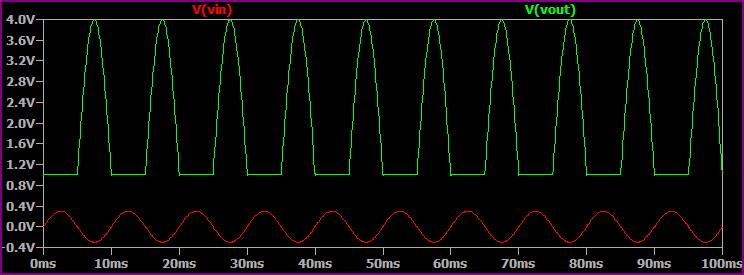I have an audio sine signal -300mv to +300mv (600mv p-p), and I would like to read it using a microcontroller. I want to get rid of the negative half of the sine signal. How can I clip it?
I do not want to use a voltage divider to add DC bias to the signal because it may not be stable due to the power supply noise.
Also, the microcontroller accepts -0.5 to 6v on each pin. But is it OK to apply that signal for a reliable project forever.

 (
(
